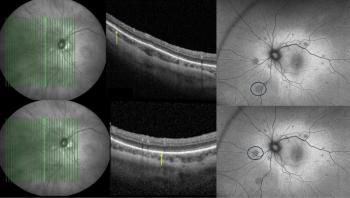
Fasting reduces tear production
Fasting significantly reduces the amount of tears produced by the eye and increases the osmolarity of the tears, according to new research.
Fasting significantly reduces the amount of tears produced by the eye and increases the osmolarity of the tears, according to new research published in
The study authors conducted a prospective controlled study of 29 eyes in 29 healthy men (mean age, 27.8 ± 5.9 years; range, 20 to 47 years). All of the men underwent corneal topography via a placido disc corneal topography and aberrometry device (OPD-Scan II, Nidek) before their ophthalmic examinations. Researchers used an osmometer (OcuSense, Tear Lab) to measure tear osmolarity. They also evaluated ocular surface disease index (OSDI) scores, tear break-up time (BUT), Schirmer I test and lissamine green staining.
The investigators took measurements between 4 pm and 5 pm before and during Ramadan and compared them using paired sample t test, considering a P value of less than 0.05 as statistically significant.
The researchers found:
- The mean tear osmolarity values were 285.6 ± 8.2 mOsm/L in nonfasting periods and 293.3 ± 16.0 mOsm/L in fasting periods.
- The mean Schirmer I values were 14.8 ± 6.0 mm in nonfasting periods and 10.6 ± 5.3 mm in fasting periods.
- Tear osmolarity, OSDI and Oxford grading scores significantly increased during the fasting period compared with the nonfasting period.
- Schirmer I values and IOP decreased during the fasting period compared with the nonfasting period.
- No significant differences occurred in tear BUT, keratometry values and corneal aberration measurements in nonfasting periods compared with fasting periods.
To read an abstract of the study, click
Newsletter
Get the essential updates shaping the future of pharma manufacturing and compliance—subscribe today to Pharmaceutical Technology and never miss a breakthrough.













































